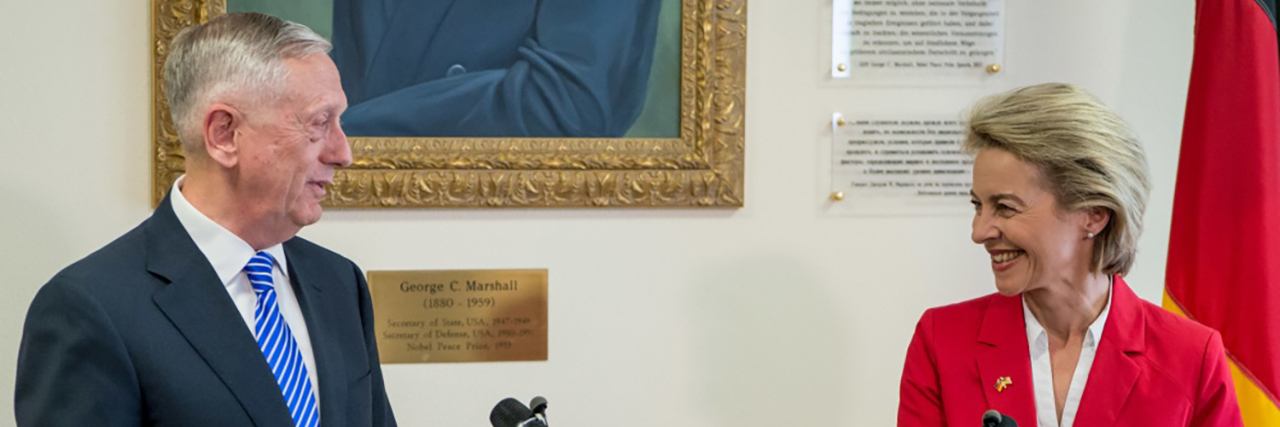
‘Transatlantic Bond Remains Strong’ in Speech Honoring Marshall Plan Anniversary
By Christine June
Public Affairs Office
George C. Marshall Center for Security Studies
GARMISCH-PARTENKIRCHEN, Germany (June 28, 2017) – The transatlantic bond between the U.S. and Germany were reaffirmed by the U.S. Secretary of Defense Jim Mattis and German Minister of Defense Ursula von der Leyen during a ceremony honoring 70 years of this partnership held Wednesday at the George C. Marshall European Center for Security Studies.
Marshall Plan Centerpiece of Transatlantic Bond
“Regardless of news reports, the transatlantic bond between our two nations’ militaries remains strong,” Mattis said. “Germany and the United States stand together, allied against threats to the peace and security of this continent, Canada and the United States.
“The U.S. commitment to our NATO Article 5 security guarantee is ironclad,” he added.
Mattis and von der Leyen delivered remarks at the 70th Anniversary of the Marshall Plan Commemoration Ceremony at the Marshall Center, a German-American international security and defense studies institute, named after the Marshall Plan founder, U.S. Army Gen. George C. Marshall.
“The Marshall Plan is a centerpiece of our joint German-American and European-American history,” von der Leyen said. “The European community would not have succeeded without the vision of the Marshall Plan and willingness of the U.S. to engage in Europe after the war.”
The Marshall Plan also helped to bring about NATO and mutual security in Europe with Canada and the U.S., said retired U.S. Army Lt. Gen. Keith Dayton, director of the Marshall Center, who added that the spirit of Gen. George C. Marshall continues to live on at the center.
“It’s all about the transatlantic link and the German-American partnership, which is more important now than ever,” Dayton said. “Marshall understood this, hence his plan. We understand it now, with the growing German-American partnership that is the Marshall Center.”
Marshall Plan – ‘A Strong Vision’
The speech at Harvard University by then Secretary of State George C. Marshall on June 5, 1947, set in motion a diplomatic and legislative train of events that led to what became known as the Marshall Plan.
The Marshall Plan set out to stimulate economic growth in a despondent and near-bankrupt post-World War II Europe, prevent the spread of communism beyond the "iron curtain," and encourage development of a healthy and stable world economy.
“We can see today in Europe the realization of a strong vision,” Mattis said. “A peaceful, industrious and prosperous continent, free from tyranny, possessing the military strength to defend itself from aggression.”
Marshall Center Deepens Transatlantic Partnerships
Before the ceremony, the two defense heads met in a strategic dialogue between their nations.
“We charted our shared security priorities for the coming year, including Afghanistan, enhanced forward presence in Eastern Europe and our national security strategies,” Mattis said.
Von der Leyen said that partnerships are more important than ever in NATO, especially the bilateral German-American Friendship.
“Together we stand for democracy, freedom and human rights,” she said. “We trust each other; we know each other; and, we need each other.”
The Marshall Center, von der Leyen said, is just the place to further deepen transatlantic partnerships.
“The Marshall Center embodies the deep transatlantic connection and friendship in a particularly lively way,” she said. “In the spirit of its name, the Marshall Center binds our international partners outside of the North Atlantic Alliance to actively participate in the Security policy discourse.”
